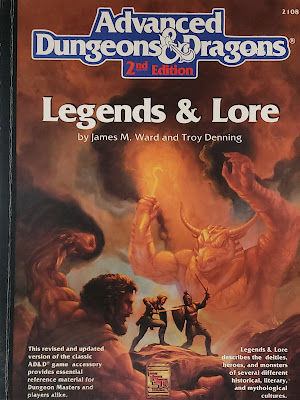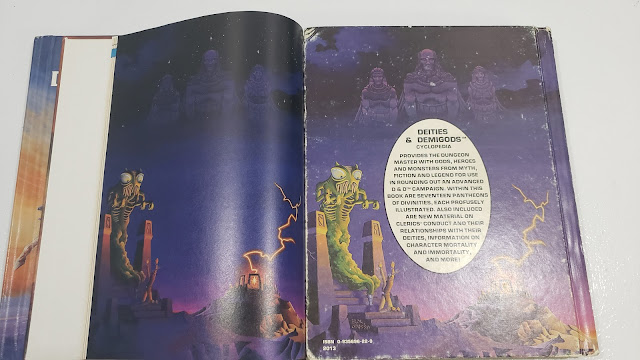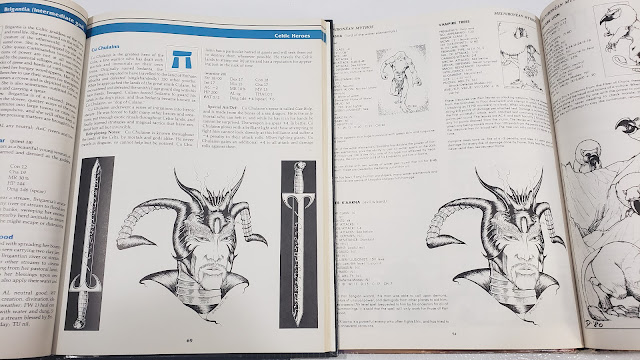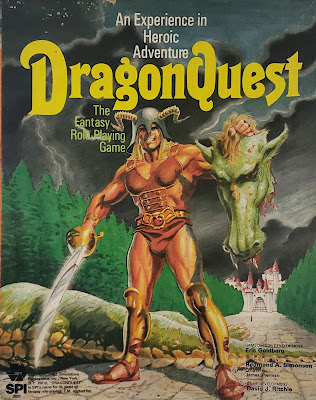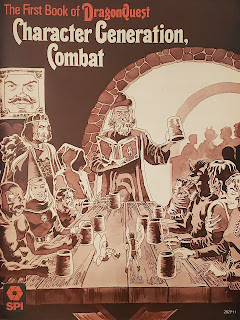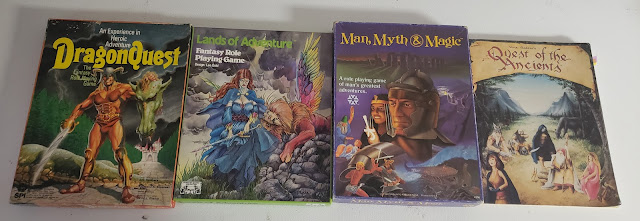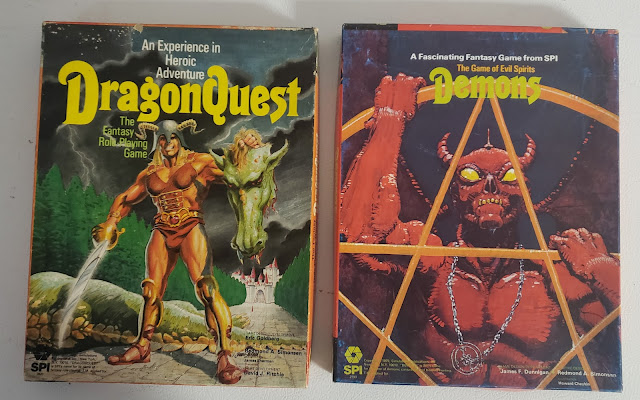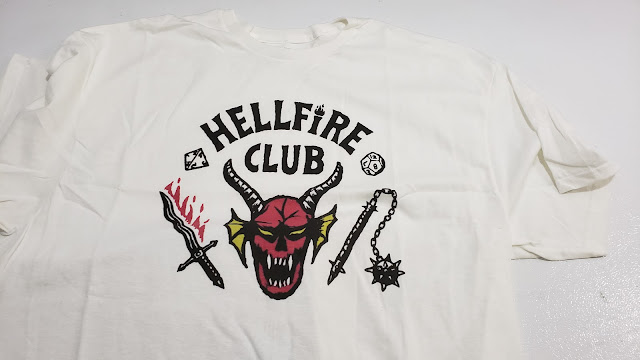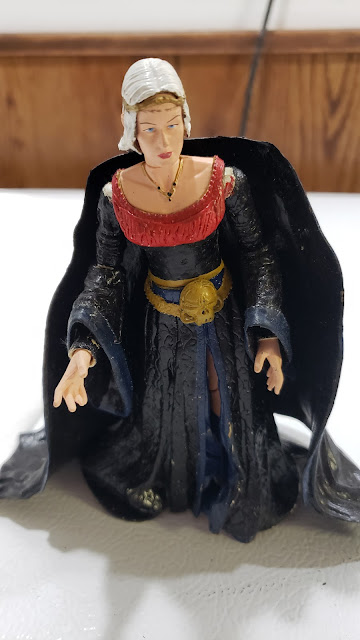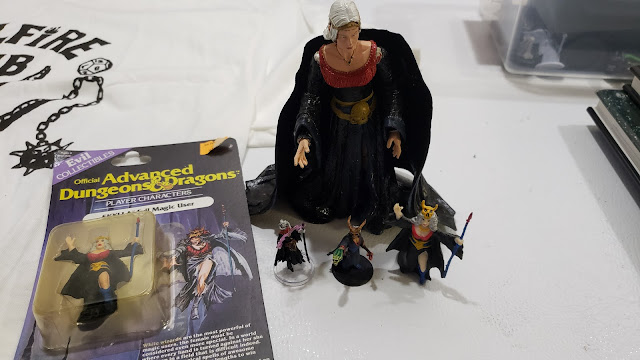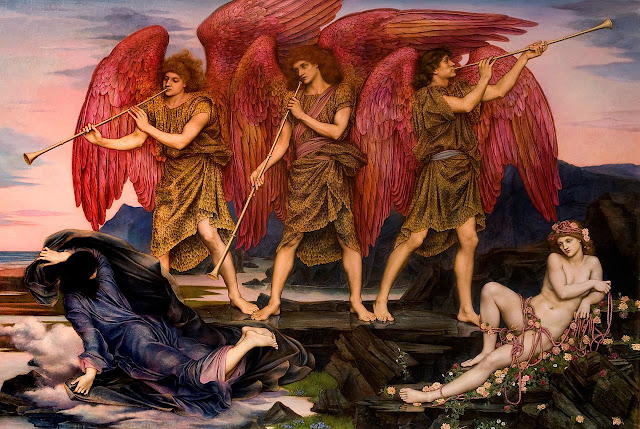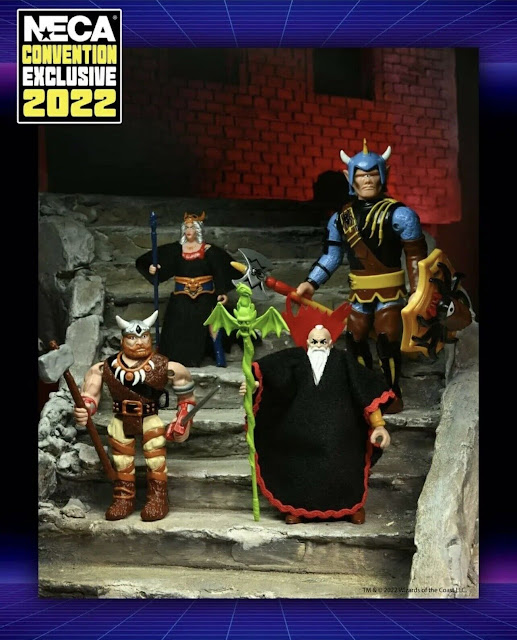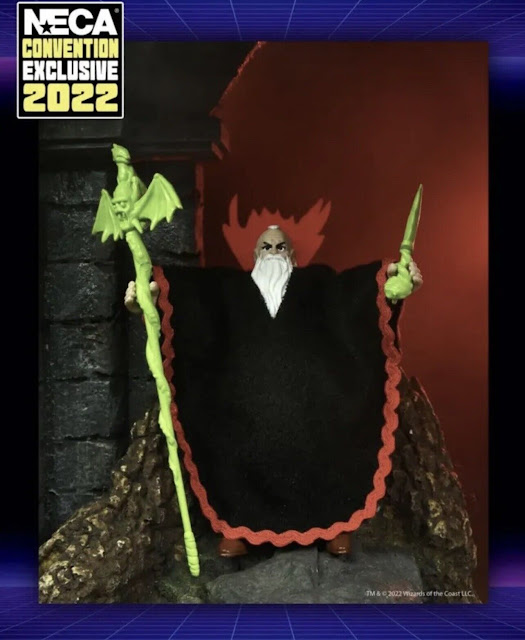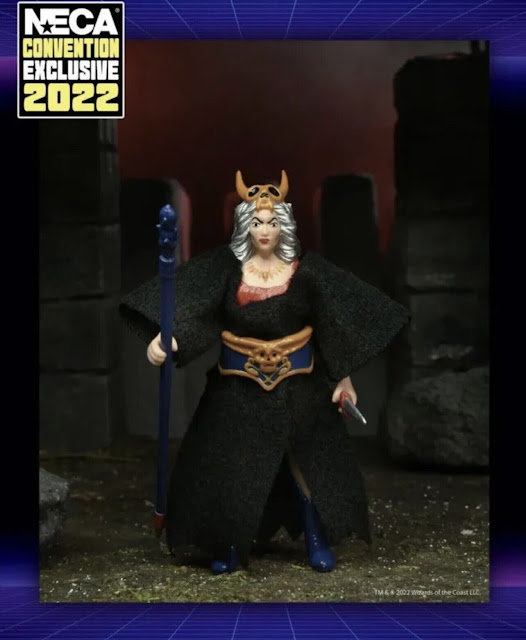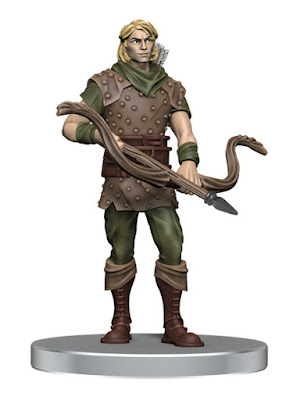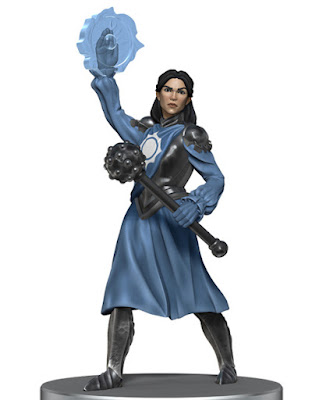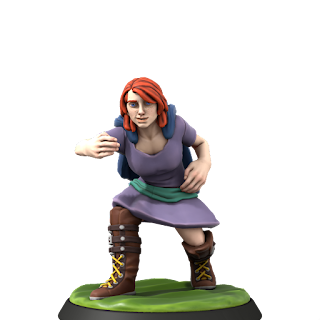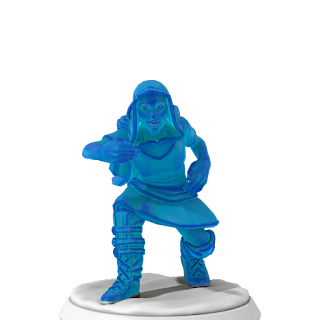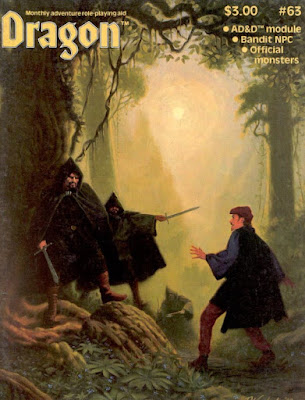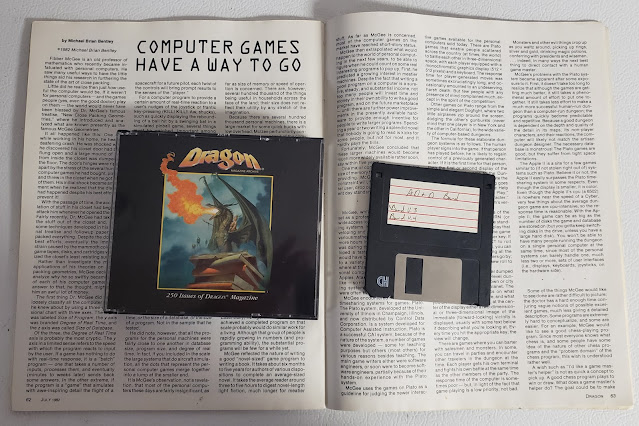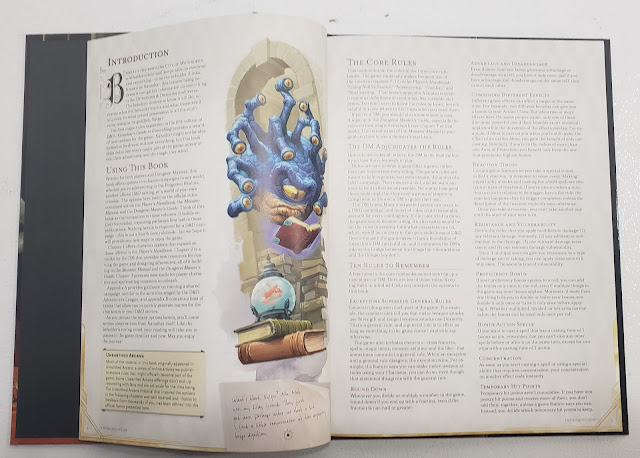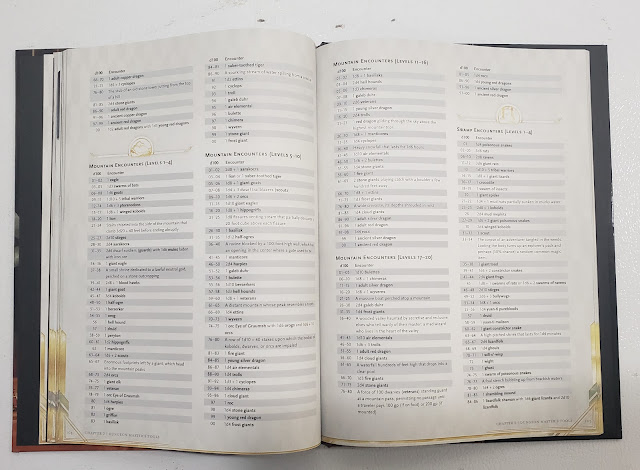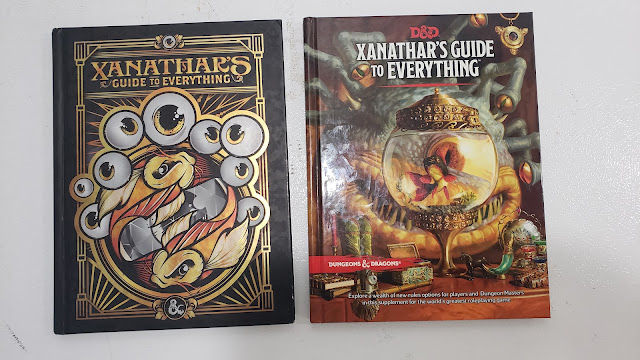A brief recap. My series, One Man's God, dealt with going through the original Deities & Demigods book and working out how various gods, monsters and/or heroes would work in the cosmology of AD&D 1st Edition demons. I took each myth/pantheon and looked at them through the lens of AD&D demons. Not Christian demons, though that can inform my view, and not Ars Goetia demons, or any other sort. Just AD&D ones. I went through the book and took on some ancillary topics as well like Syncretism and how to build my own myths.
AD&D 2nd Edition though is a different sort of creature. For starters, we didn't even have demons or devils at the start. Secondly, the cosmology of the Outer Planes or the "Great Wheel" became something of its own setting in Planescape later on. So a lot of assumptions going into One Man's God are called into question in this new cosmological viewpoint.
Though I think I could make the argument that I can take the Legends & Lore book and look at it independently of later developments and certainly Planescape and still apply the rules I was using for OMG. I am going to cover a lot of ground in this one, but it is very familiar ground. Sometimes very, very familiar. But before I do that maybe an overview/review of Legends & Lore is in order.
Legends & Lore, AD&D 2nd Edition
For this review, I am considering the hardcover book published in 1990 and the files from DriveThruRPG. 192 pages. Color cover and inserts, black & white and blue interior art.
My history with Legends & Lore is a complicated one. Deities & Demigods was my very first AD&D hardcover purchase. I was playing a Cleric in D&D B/X at the time and wanted to expand his role in the game. I thought a book of gods would be a great in. Plus it was mythology that got me into D&D to begin with, so it was a natural choice for me.
Like many at the time I also, rather immaturely, chaffed under the name change of "Deities & Demigods" to "Legends & Lore" feeling that TSR was bowing to the smallest, but loudest, contingent of people criticizing the game. But I would later buy a copy so my collection of AD&D hardbacks would be complete. Fast forward a couple of years and now AD&D 2nd Ed is the new game on the block and there is a new Legends & Lore out. This time I did not mind the name, maybe because I was now in college and saw that it fit the content better. I recall sitting in the apartment of my old High School DM and his cousin was there (he lived in the apartment below) and we were discussing the new L&L book. I can't say the discussion was very favorable towards the new book.
Before I delve into that, let's look at the book and I'll bring up that discussion as it pertains.
Legends & Lore was written by James M. Ward (who gave us Gods, Demi-gods, and Heroes and Deities & Demigods) and Troy Denning. This book has the advantage of being the one that is most in common with three different versions of the D&D game. The book is called revised and updated, and it is certainly that, but there are plenty of similarities between this book and the 1st Edition one.
This book contains 11 different mythologies, down from the 17/15 of the previous edition. This was one of my first points of contention with the book back in 1990. Where were the Babylonia and Summerian? The Finnish or the Non-humans? One could have easily combined (and made a good argument for it) the Babylonian and Sumerian myths. Combined they still were not as long as the Egyptian myths cover.
My second point of contention, and even then I knew this was a very weak leg to stand on, is that the stats were gone. Oh sure there were brand new stat blocks for worshipers and what the gods can do and there were the stats for their "Earthly" avatars, but the long, and let me just say it, Monster Manual-like stats were gone. Yes. These are not supposed to beings you can, or even should, hunt down to kill.
My last complaint, and again this one is weak, is that so much of the art was reused for this edition.
Granted sometimes the older art was used to great effect.
Other times, less so.
Thelb K'aarna art for Cú Chulainn? Nope. Not buying it. They would have been better using Moonglum.
The book does though do a very good job to laying out the powers of Greater, Intermediate (new to this edition), Lesser, and Demi- Gods. Power common to all gods are discussed and powers they grant to their clerics, in general, are discussed, with the details of each god. Ok. So this means each god takes up more space. That explains some of the loss.
There is a solid human focus here and that is by the design of the book since they are drawing more from history.
Each of the pantheon/myths is presented in more or less of the same format. We get a covering of the myths and an explanation on where they come from. There are some new spells listed and some new magic items. We follow with the Gods, usually the most powerful first working our way down to demi-gods and ascended heroes. Where appropriate there are also monsters and sometimes maps/plans of centers of worship. Pyramids for the Aztecs and Egyptians, temples, and so on.
Also included with each god are the duties of the priesthood and what their requirements are. These will include alignment, ability score minimums, Weapons the priests are allowed to use, armor restrictions, what spheres of clerical magic they will have access, what other powers might be granted, and whether or not they can turn or command undead or even have no effect on them at all. This is the forerunner of 3rd Edition's Channel Divinity power for Clerics.
The myths include American Indian, Arthurian Legends, Aztec, Celtic, Chinese, Egyptian, Greek, Indian, Japanese, Newhwon, and Norse.
One Man's God
Now I want to look at each of these and see how they would fare using the lens of One Man's God. Or, to put it easier. Are there any demons here?
American Indian
Covers some similar ground (as all the myths do) as the original Deities & Demigods. No monsters here, but a lot of heroes.
Arthurian Legends
No gods at all here, despite how important Christian mythology, especially around the Holy Grail, is to these tales. Only a note that "Authur's deity remains distant and unapproachable." The Grail is mentioned as a magical relic, but not much more about it. There are only two monsters here, The White Hart and The Questing Beast.
Aztec myths are full of demons and demon-like creatures. What does 2ne ed give us? A paragraph about how the mythology is lacking in fantastic creatures. Sorry, not buying that one.
Now Celtic myths have monsters, and I have talked about many of them before, but only a very few could be considered demons in the AD&D sense of the term. Here we get a lot of gods and only one hero, Cú Chulainn.
Again China has tons of creatures that could be called demons in the AD&D sense. The Neglected Ancestral Spirit could be considered demonic. But are they AD&D demons? I am going with no.
Not sure I am liking that blonde-haired, green-eyed version of Isis here. It is likely that our first concept of demons came from Egyptians. Well.,, I would argue they came from the Sumerians who would then influence the Egyptians. Also, Egyptians have a ton of gods, so no monsters at all in this section. Not even Apep and Ammit.
Many of the primordial titans of Greek myth would get new life in Roman myths and then get ported over to Christian mythology. Geryon is one notable example. As far as Greek myths go this one has the gods a bit better organized. The Furies or Erinyes are now "Lesser Gods" which tracks with some myths and here their alignment is Neutral. Among the monsters are Cerberus (NE) and the Gigantes (CE) which are bit like the primordial versions of the giants. These work great for my Hüne which are bit like demons.
One of Kali's great powers is her ability to scare away demons. It's why she is put at the head of armies. Does this book give us any? Sadly no monsters are mentioned here.
This one feels a bit more research than the original D&DG. While no demons, the god Amatsu-Mikaboshi would make for a reasonable devil or some other type of fiend; a unique, Prince level one. He is a rebel god and would not submit to the other gods, so there is a bit of Lucifer in him. That and the fact he is called the "Dread Star of Heaven."
Our odd one out since it is not a world myth but rather the creation of Fritz Leiber. Again Tyaa could pass for a demonic queen in many settings along with the Birds of Tyaa.
The Norse gave us fire and frost giants and many of those primordial giants are quite demon-like. Lots of heroes here, as to be expected, and some monsters. Garm and Fenris Wolf could both be considered to be like demons as well.
In the end this book represented a paradigm shift that was not just part of AD&D 2nd Edition but happened along with it. Even future books that dealt with gods handled them a little different than this, but along the same paths of evolution.
What was the outcome of my story about talking with my friends about this book? Well if you see the image of the cover I used, well that is my own book. I didn't buy it right away, in fact it was many years later before I picked up a copy of Legends & Lore. Strange that a book that was really one of my first purchases for AD&D would in the very next edition become one of my last.

